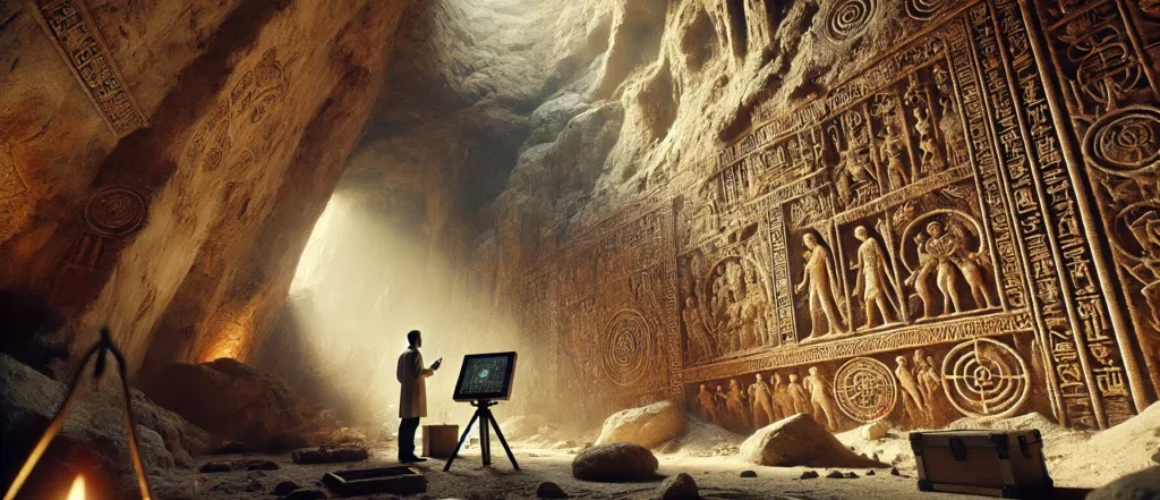Muistsed skriptid koobastes
For centuries, the secrets of our ancestors have captivated the imagination of historians, linguists, and adventurers alike. Among the most enigmatic relics of ancient civilizations are the scripts etched into the walls of remote caves. These hidden inscriptions not only whisper stories of forgotten eras but also pose profound mysteries about their creators and purposes. The quest to uncover their meanings remains a testament to human curiosity and the enduring allure of the past.
Unearthing the Inscriptions
Kogu maailmas, Kagu-Aasia lubjakivikoobastest Põhja-Aafrika liivakivikaljudeni, kaunistavad iidsed kirjad peidetud grottide seinu. Need kirjutised, mida sageli saadavad keerukad nikerdused ja erksad maalid, on aken varajaste ühiskondade ellu, uskumustesse ja püüdlustesse. Mõnedes koobastes, nagu India Ajanta piirkonnas, on pealdised iidse prakriti keeles, samas kui teistes, näiteks Hiinas asuvates Mogao koobastes, on tekste tanguti ja tiibeti keeles.
Üks kuulsamaid näiteid on Surnumere kirjarullid, mis avastati Surnumere lähedal asuvatest Qumrani koobastest. Need heebrea, aramea ja kreeka keeles kirjutatud käsikirjad on andnud hindamatu ülevaate iidsete juudi kogukondade religioossetest tavadest. Samamoodi tekitab Lihavõttesaare Rongorongo skript, mis on raiutud puidust tahvlitesse, kuid mis on potentsiaalselt inspireeritud koopakirjadest, oma dešifreerimata sümbolitega teadlasi.
Mysteries of Their Origins
The creation of these cave inscriptions raises many questions. Who were the authors, and what compelled them to etch their thoughts onto stone? In many cases, these texts served as records of religious devotion, astronomical observations, or historical events. Inscriptions from the Mayan civilization, for example, detail elaborate rituals and celestial alignments, hinting at a profound connection between spirituality and the cosmos.
However, some scripts defy easy explanation. The inscriptions in the Tayos Caves of Ecuador, believed by some to be linked to lost civilizations or even extraterrestrial visitors, remain shrouded in mystery. Similarly, the undeciphered Linear A script of the Minoans, discovered on Crete and in nearby caves, continues to puzzle researchers. Could these writings hold the key to understanding vanished cultures, or are they mere fragments of broader, unknowable narratives?
The Challenges of Decipherment
Interpreting ancient cave scripts is no small feat. Time and environmental factors often erode the inscriptions, leaving fragmented or incomplete records. Additionally, without a Rosetta Stone equivalent to provide context, many scripts remain undeciphered.
Advanced technologies like 3D scanning and AI-driven pattern analysis have revolutionized the study of these inscriptions. By digitally reconstructing worn carvings and comparing symbols across different sites, researchers are making strides in decoding the messages of the past. Yet, for every breakthrough, new questions arise, reminding us that the journey to understanding history is never straightforward.
Preserving the Legacy
The discovery and study of ancient cave inscriptions underscore the importance of preservation. Many sites are threatened by natural erosion, human activity, and climate change. Efforts to protect these cultural treasures are essential to ensuring that future generations can continue to explore the mysteries of their heritage.
In a world increasingly driven by technology and rapid change, the scripts hidden within caves serve as a poignant reminder of humanity’s enduring quest to communicate, create, and connect across time. They challenge us to look beyond the surface, to seek meaning in the depths, and to honor the voices of those who came before us.

